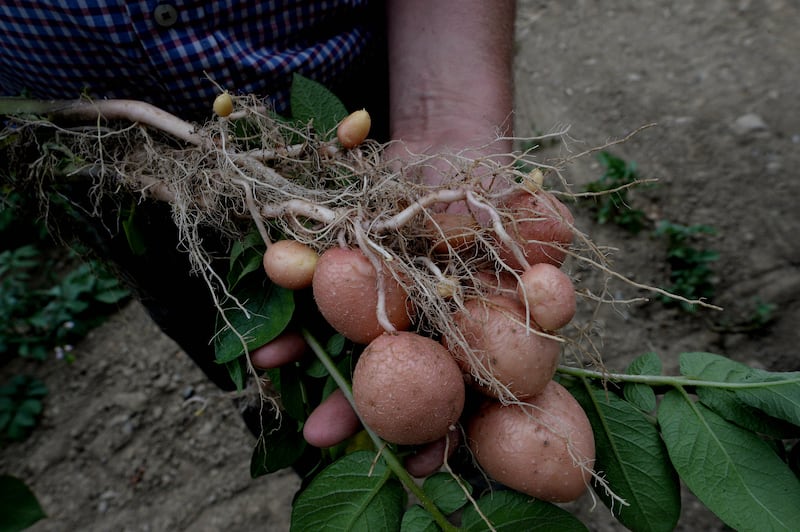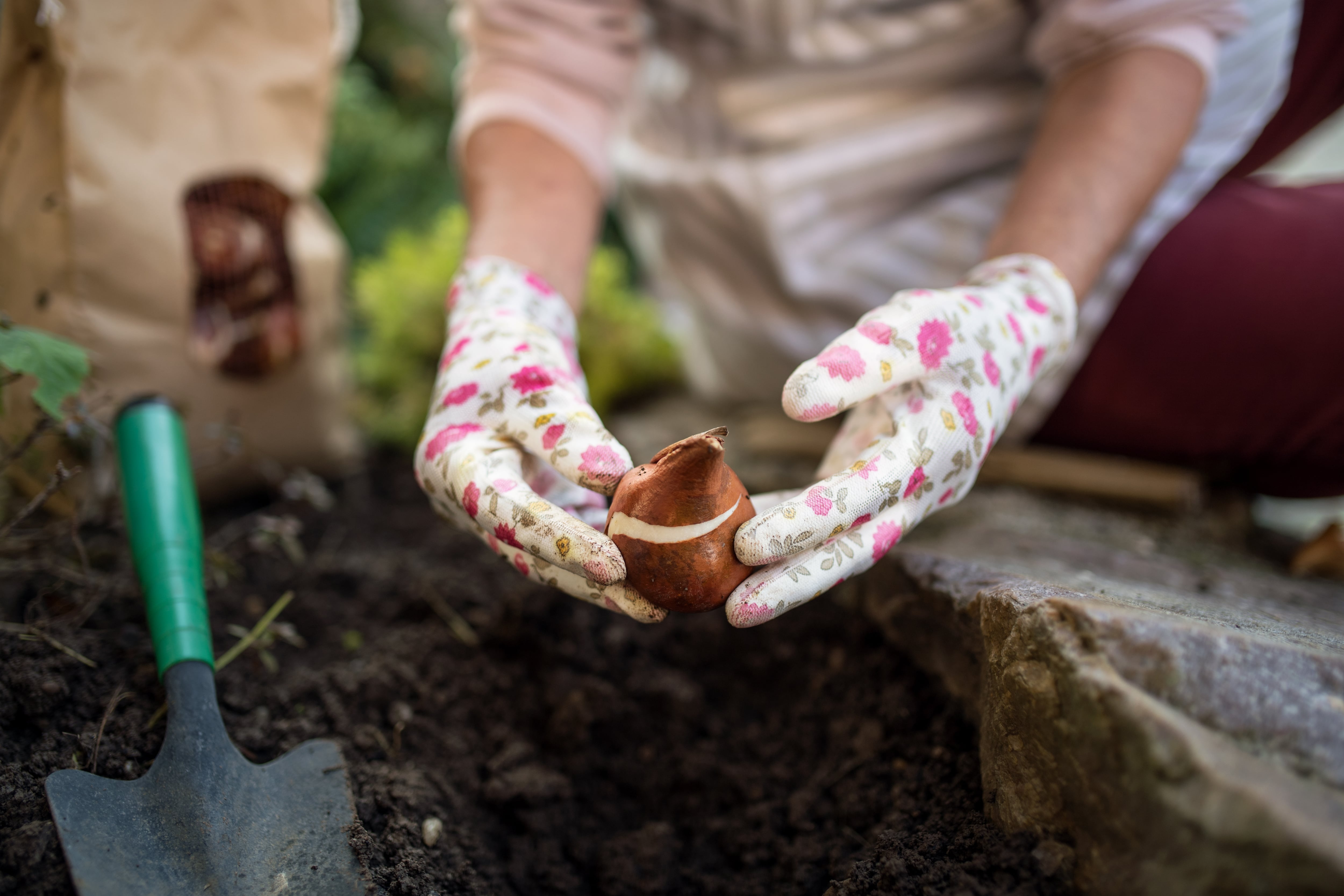If you’re a gardener with limited time and space for growing vegetables, then what’s on your “must grow” shortlist? That’s the quandary I’m facing this summer, as the time-consuming process of prepping the ground for planting in our “new-old” overgrown country garden trundles slowly along, forcing some harsh choices. So, it’s a “no” from me to carrots, for example, because organic Irish-grown varieties are available for a very reasonable price in my local supermarket. As undeniably delicious as the homegrown kinds are, I also won’t have time for the laborious faff of thinning and weeding the plants as well as protecting them against the destructive pest known as carrot fly.
Short on the protected growing space that a polytunnel or glasshouse offers, it’s also – although it pains me – a “no” to French beans. But without the guaranteed heat of a covered space, I’m not willing to roll the dice and bet on them getting the kind of consistently warm, bright, free-draining conditions that these half-hardy annuals need to flourish.
It’s a similar story for squash, pumpkins and courgettes, all of which need a sheltered, warm, sunny spot and lots of space to properly thrive outdoors, or alternatively the protection of a glasshouse or polytunnel. Would these heat-lovers grow well outside in a less-than-average Irish summer? Unfortunately, not reliably enough to make my ruthless shortlist. It’s also a “no” (how harsh am I?) to sweet corn and peppers, which are too demanding and/or too space-consuming and/or too heat-loving for my needs.
[ Your gardening questions answered: Why are my onions rotting?Opens in new window ]
Apologies to tomatophiles everywhere – but it’s another “no” to tomatoes for the reason that this vegetable (or fruit, if you’re a stickler) is the demanding toddler of the vegetable kingdom, requiring oodles of time and dedicated attention to properly perform.
READ MORE
If you’re the sort of productive but low-intervention gardener whose approach is one of benign neglect, for example, then don’t grow tomatoes. Considering a family holiday abroad, or even just planning a weekend away this summer? Then probably don’t grow tomatoes, unless you have a reliable, green-fingered neighbour or family member willing to stand in as a hardworking surrogate parent in your absence.
Like many Irish gardeners, my attachment to the not-so-humble spud runs deep, despite the fact that it needs regular attention to be properly productive
Even if they’re kind-hearted/foolhardy/naive/crazy enough to agree to this, you’ll still almost certainly spend too much of your time away worrying about your tomato plant babies in the possible event of a summer heatwave, blight warning or inadequate, insufficient, inconsistent watering or ventilation on the part of their temporary carer.
Don’t believe me? Pfff… Just wait until you find yourself concernedly WhatsApping a Youtube video at midnight to explain the vital importance of side-shooting, liquid feeding, and the subtleties of ventilating a polytunnel or glasshouse during the day but closing it again at night to retain heat.

Saying “no” to cauliflowers is, of course, a whole lot easier, partly because this humble member of the brassica family is – hmm, how can I say this nicely – a whole lot less charismatic and less versatile in comparison to the photogenic, delicious, multipurpose tomato. A cauliflower plant also takes up an awful lot of space, is challenging to grow well, and must be harvested and eaten very quickly once its snowy-white “curds” have ripened. Much as I love it as a vegetable, it’s another “no” to its brassica cousin, cabbage, for reasons of space versus its ready availability in supermarkets.
But that’s enough about the crops that I can’t or won’t grow this summer. What about the vegetables that do make my must-grow list, which I’ve chosen because they’re easy to grow and/or delicious and/or highly productive?
Top of that list come potatoes. Yes, yes, I know, the plants take up a lot of space and can fall victim to blight. But like many Irish gardeners, my attachment to the not-so-humble spud runs deep, despite the fact that it needs regular attention to be properly productive. Also, putting all those cultural and historical associations aside, nothing really compares to the memorably magical flavour of homegrown potatoes pulled fresh from the soil. That said, I’m playing it safe by avoiding blight-prone varieties such as British Queens, and instead finding space for some of the excellent new blight-resistant, high-yielding varieties that have become available in recent years such as Vitabella and Carolus.

Also on my must-grow list is purple sprouting broccoli (the variety known as Rioja). True, it’s an unruly giant of a plant. But despite this vegetable’s sprawling growth habit and need to be staked and netted against attack by pigeons and the cabbage white butterfly, its delicious, tender, juicy tips or sprouts are hugely useful over a long period of time and during a part of the year (late winter, spring) when there’s not an awful lot else to harvest in the kitchen garden. Sprouting broccoli is also very expensive to buy, another great reason to find room for it.
Most good seed suppliers offer a mixed selection that can be either direct sown in the ground at this time of year or raised in modules and then transplanted as young plants
Leeks (the variety known as Giant Winter), parsnips (Javelin) and beetroot (Pablo) also make my list; all are useful, versatile, long-lasting, easy to grow, generally free from pests and diseases and can be harvested over an extended period. Another must-grow, for much the same reason, is rainbow chard, which is as delicious stir-fried in olive oil, garlic and soya sauce as it is in a home-baked apple pie. Knowing how delicious they are raw or tossed in a salad or stir fry, I’ll also be finding space for mange-tout peas (the flavoursome variety known as Carouby de Maussane).
Of course, no kitchen garden would be complete without a selection of salad leaves. For maximum choice and a long harvesting period, I’ll be successionally sowing seeds of some fast-growing cut-and-come again varieties over the summer. Most good seed suppliers offer a mixed selection that can be either direct sown in the ground at this time of year or raised in modules and then transplanted as young plants into their final growing spot in the garden (a good idea when slugs are a problem).
[ The adventurous Irishman who introduced the potato to GreeceOpens in new window ]
Last but not least are some of the short-lived but invaluable herbs such as coriander (the slow-to-bolt variety known as Calypso), parsley (Italian Giant), and basil (the robust variety known as British Basil that I’ll be growing from seed in pots on a sunny windowsill). In this way, I’ll be covering a lot of bases and guaranteeing a steady supply of delicious homegrown produce for many months to come.
This week in the garden
It’s been a long, cool spring with growth delayed by several weeks in most parts of the country. With no suggestions in the long-term forecasts of a sustained rise in temperatures over the coming weeks, you can help to boost germination and growth in vegetable beds by using cloches and/or covering young plants or recently sown seed with a light blanket of horticultural fleece secured along its edges with some wooden planks.
Start hardening-off any spring-sown plants raised from seed or tubers under cover of a glasshouse or polytunnel in preparation for planting them out over the coming weeks. Hardening off is the process by which their young, soft, tender growth is gradually acclimatised to harsher, more variable outdoor growing conditions so they don’t receive a sudden check to their growth. Without it, plants can really struggle to adjust, and some may never fully recover.
Dates for your diary
Tuesday, May 2nd (8pm-9pm), Kilkenny Castle, Kilkenny, R95 YRK1; Trees in Ireland; Distinguished Natives and Honoured Guests, a talk by UCD lecturer DR Mary Forrest as part of OPW Kilkenny Castle’s Garden talks at the Parade Tower Spring 2023 series; see kilkennycastle.ie
Sunday, May 14th, Huntington Castle, Clonegal, Co Carlow, Y21 K237; Rare & Special Plant Fair 2023 with up to 40 stalls featuring rare and unusual plants by many of the country’s top specialist nurseries, plus guided tours of Huntington Castle, see rareandspecialplantfair.ie and huntingtoncastle.com




















